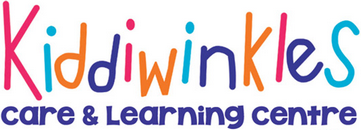Primary Care Giving
A process in which practitioners are focused on enabling close attachments, particularly with under two's.
Practitioners have responsibility for establishing and maintaining close relationships with a small group of children and their families.
There is an understanding that valuable learning is taking place for the infant in the crucial routine care times in which they are engaged with one sensitive and responsive adult.

Feeding
- Firstly have an understanding about what stage or method each child is at and using. One to one on knee/two spoon method at table/at table with others feeding themselves. Ask staff to help with this.
- Ask the child if they would like to come for breakfast/snack/dinner/dessert/bottle. Allow the children to come to you or the table.
- Assist the child only when you need to as we want to promote independence.
- Speak to the child in a relaxed tone introducing new vocabulary. Talk about what the child is eating, equipment they are using and action words. e.g. our you eating carrots, you can hold your glass by yourself, watch me pour some water into my glass etc. Give plenty of praise to build confidence and independence.
- Ensure meal times are relaxed and slow, keep it at the child's rate. Do not rush, other staff should help support each other.
- e.g.
- if staff are doing one to one the other staff should try to protect their special time, protecting interruptions if and where possible.
Feeding on knee
- Ensure to speak to other room staff , inform them that you are going to have a special moment.
- Ensure to gather all equipment needed before taking the baby to the sofa/feeding chair or place were the child is most comfortable. Respect is given to the child and their needs at all times.
- Equipment to be collected- breakfast/dinner/snack/ bottle/ glass of water/ wipe/bib/apron.
- This is to be collected before you approach the child.
Sleep
- When a child is going to bed, make it a nice calm, relaxed experience. Talk to the child telling them what is going to happen.
- Have the child's bed/cot ready
- Take the child's shoes of before bed. Give dummy or comforters.
- Place the child in the cot and step away slowly.
- Remember always ask room staff as each child has different ways in which they go to bed.
- e.g.
- some like to lay in bed with adult at their side. some like their back rubbed.
- some like you to sing to them.
- some prefer to be placed in the cot and the adults to step back.
Nappy Changing
- Ask the child would they like to get their nappy changed. Show the child a nappy if they seem unsure.
- Give the child time to make their decision.
- Allow the child to walk to the changing area or encourage them to come with you by getting down to their level.
- Ensure your changing area/mat is clean and safe.
- Gather all equipment needed, aprons, gloves, nappy, wipes, cream. Put on apron and gloves and then place the child on the mat.
- Talk to the child about what you are doing step by step(explain the action)
- Use the prompt charts provided.

